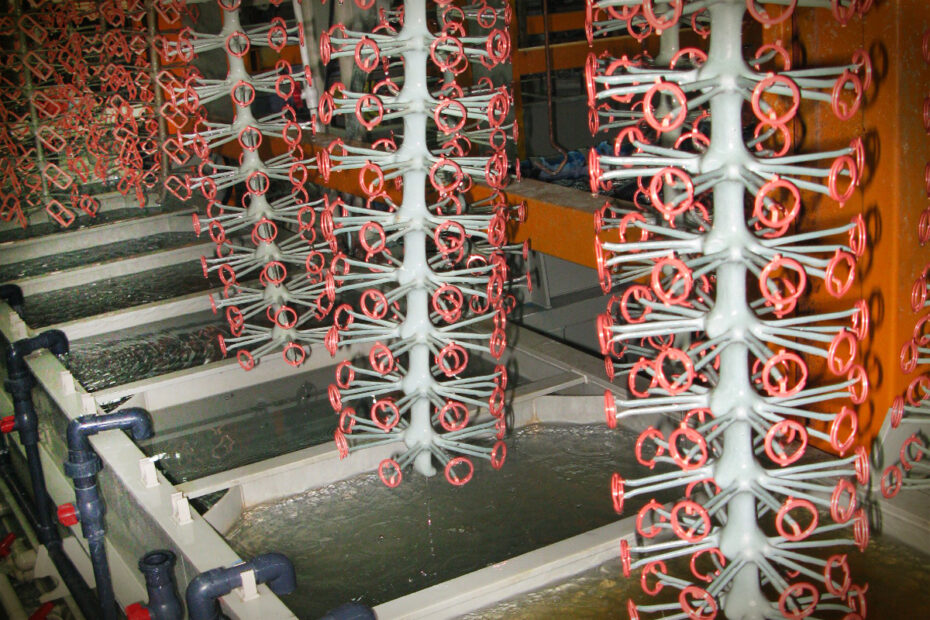Medal electroplating is a key electroplating process for medal making. The electroplating process is divided into electroplating and electrophoresis. Electroplating includes electrodeposition, electroless deposition, conversion film formation, surface cleaning, flattening, brightening, micro-roughening, etc. Including surface treatment processing operations. Electrophoretic paint film has the advantages of plump, uniform, flat and smooth coating. The hardness, adhesion, corrosion resistance, impact performance and penetration performance of electrophoretic paint film are obviously better than other coating processes. What is the difference between medal plating and electrophoresis?
Electroplating
Electroplating is the process of plating a thin layer of metal film on certain metal surfaces using the principle of electrolysis.
The workpiece to be electroplated serves as the cathode during the process, with the plated metal or other insoluble material acting as the anode. Moreover, in order to keep the concentration of metal cations in the plating layer unchanged, it is necessary to use a solution containing metal cations in the plating layer as the electroplating solution. During the electroplating process, the cations of the coating metal are reduced on the surface of the workpiece to be plated to form a metal film coating.
Electrophoresis
Electrophoretic coating is a coating method that uses an external electric field to make particles such as pigments and resins suspended in the electrophoretic solution migrate in a direction and deposit them on the surface of one of the electrodes.
Electrophoretic paint film has the advantages of plump, uniform, flat and smooth coating. The hardness, adhesion, corrosion resistance, impact resistance and permeability of electrophoretic paint film are obviously better than other coating processes. Electrophoretic process is superior to other coating processes.
The difference between electroplating and electrophoresis
Both electrophoresis and electroplating use direct current. The purpose is to prevent corrosion and protect and beautify the metal surface.
Electrophoresis process
The electrophoresis process is divided into anodic electrophoresis and cathodic electrophoresis. If the paint particles are negatively charged, the workpiece is the anode, and the paint particles are deposited on the workpiece to form a film under the action of the electric field force, which is called anodic electrophoresis; on the contrary, if the paint particles are positively charged, the workpiece is the cathode, and the paint particles are deposited on the workpiece. cathodic electrophoresis.
Electroplating process
Electroplating is the process of using the principle of electrolysis to coat a thin layer of other metals or alloys on the surface of certain metals. Such as rust), improve wear resistance, electrical conductivity, reflectivity, corrosion resistance (copper sulfate, etc.) and enhance aesthetics. The outer layers of many coins are also electroplated.
The cost is different.
Electroplating is a coating of metal, while electrophoresis is a coating of resin. Electrophoresis is simpler and easier to operate than electroplating. Therefore, electrophoresis is much cheaper than electroplating in terms of cost budget.
There is also a very obvious difference in appearance. The medals painted by electroplating can have bright gold and matte gold in appearance, while the medals painted by electrophoresis will be relatively dark in color. Color is produced by electrophoresis. Electroplating coloring generally attaches a layer of metal film to the surface of the medal, while electrophoretic coloring uses an electric field to directionally migrate the pigment and deposit it on the surface of the medal.
